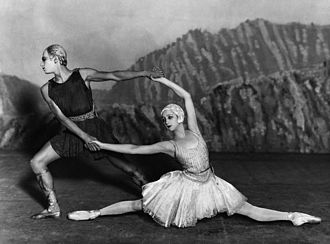History and development
Neoclassical ballet is a genre of dance that emerged in the 1920s and evolved throughout the 20th century. Artists of many disciplines in the early 1900s began to rebel against the overly dramatized style of the Romantic Period. As a result, art returned to a more simplistic style reminiscent of the Classical Period, except bolder, more assertive and free of distractions. This artistic trend came to be known as Neoclassicism. The ballet choreographer who most exemplified this new, clean aesthetic, was George Balanchine. As a child, the importance of classicism was imprinted on him when he was a student at the famed Imperial Ballet School, which was (and remains) steadfast in its firm commitment to classical ballet technique. Upon his graduation, Balanchine earned the privilege of choreographing for the Ballets Russes, where he had the opportunity to collaborate with Picasso, Matisse, Chanel, Debussy, Stravinsky and Prokofiev, who were all at the forefront of Neoclassicism. Rather than turning away from his classical training, Balanchine built upon the traditional ballet vocabulary. He extended traditional ballet positions, played with speed and freedom of movement, and incorporated new positions not traditionally seen in ballet. Balanchine's first foray into the neoclassical style was Apollon Musegete, choreographed in 1928 for the Ballets Russes, and set to a score by Stravinsky. Unlike many of his later neoclassical works, this ballet tells a story, which indicates that Balanchine had not yet completely broken free from the Romantic tradition. Moreover, when this ballet first premiered it featured large sets, costumes and props. However, Balanchine continually revised it as his neoclassical style evolved. For example, later versions of the ballet utilized white practice leotards and minimal sets and lights. Balanchine even renamed the ballet simply Apollo. The transformation of Apollo exemplifies Balanchine’s transformation as a choreographer. As Balanchine’s neoclassical style matured, he produced more plotless, musically driven ballets. Large sets and traditional tutus gave way to clean stages and plain leotards. This simplified external style allowed for the dancers’ movement to become the main artistic medium, which is the hallmark of neoclassical ballet.
Balanchine found a home for his neoclassical style in the United States, when Lincoln Kirstein brought him to New York in 1933 to start a ballet company. He famously decided to start a school, where he could train dancers in the style he wanted, and so the School of American Ballet was founded in 1934. Many of his most famous neoclassical ballets were choreographed in the United States, on both his school eventually his own company, the New York City Ballet, which he founded in 1948 and still exists today. Well-known neoclassical ballets like Concerto Barocco, (1941), Four Temperaments, (1946), Agon, (1957), and Episodes, (1959) were all choreographed in New York. [3]

Sergei Pavlovich Diaghilev, usually referred to outside Russia as Serge Diaghilev, was a Russian art critic, patron, ballet impresario and founder of the Ballets Russes, from which many famous dancers and choreographers would arise.
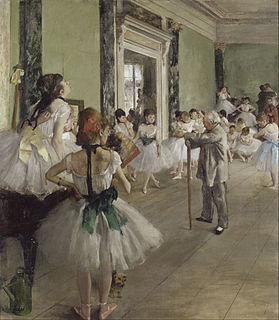
Ballet is a type of performance dance that originated during the Italian Renaissance in the fifteenth century and later developed into a concert dance form in France and Russia. It has since become a widespread and highly technical form of dance with its own vocabulary. Ballet has been influential globally and has defined the foundational techniques which are used in many other dance genres and cultures. Various schools around the world have incorporated their own cultures. As a result ballet has evolved in distinct ways.
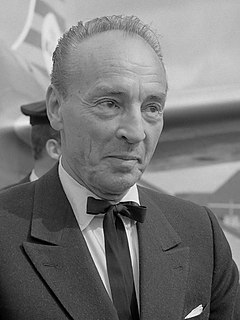
George Balanchine was an American ballet choreographer who was one of the most influential 20th-century choreographers. Styled as the father of American ballet, he co-founded the New York City Ballet and remained its Artistic Director for more than 35 years. His choreography is characterized by plotless ballets with minimal costume and décor, performed to classical and neoclassical music.

Bronislava Nijinska was a Polish ballet dancer, and an innovative choreographer. She came of age in a family of traveling, professional dancers.

Leonid Fyodorovich Myasin, better known in the West by the French transliteration as Léonide Massine, was a Russian choreographer and ballet dancer. Massine created the world's first symphonic ballet, Les Présages, and many others in the same vein. Besides his "symphonic ballets," Massine choreographed many other popular works during his long career, some of which were serious and dramatic, and others lighthearted and romantic. He created some of his most famous roles in his own comic works, among them the Can-Can Dancer in La Boutique fantasque (1919), the Hussar in Le Beau Danube (1924), and, perhaps best known of all, the Peruvian in Gaîté Parisienne (1938). Today his oeuvre is represented by his son Theodor Massine.
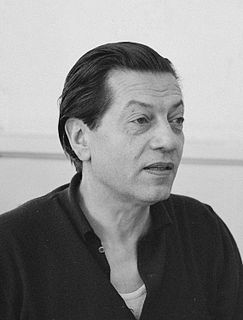
Serge Lifar was a French ballet dancer and choreographer of Ukrainian origin, famous as one of the greatest male ballet dancers of the 20th century. Not only a dancer, Lifar was also a choreographer, director, writer, theoretician about dance, and collector.
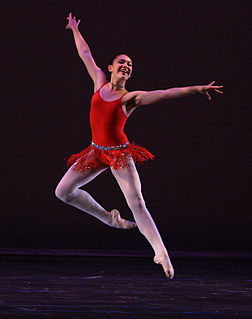
Contemporary ballet is a genre of dance that incorporates elements of classical ballet and modern dance. It employs classical ballet technique and in many cases classical pointe technique as well, but allows greater range of movement of the upper body and is not constrained to the rigorously defined body lines and forms found in traditional, classical ballet. Many of its attributes come from the ideas and innovations of 20th-century modern dance, including floor work and turn-in of the legs. The style also contains many movements emphasizing the bodies flexibility.

The Ballets Russes was an itinerant ballet company based in Paris that performed between 1909 and 1929 throughout Europe and on tours to North and South America. The company never performed in Russia, where the Revolution disrupted society. After its initial Paris season, the company had no formal ties there.

The company Ballets Russes de Monte-Carlo was formed in 1932 after the death of Sergei Diaghilev and the demise of Ballets Russes. Its director was Wassily de Basil, and its artistic director was René Blum. They fell out in 1936 and the company split. The part which de Basil retained went through two name changes before becoming the Original Ballet Russe. Blum founded Les Ballets de Monte Carlo, which changed its name to Ballet Russe de Monte-Carlo when Léonide Massine became artistic director in 1938. It operated under this name until it disbanded some 20 years later.

Apollo is a neoclassical ballet in two tableaux composed between 1927 and 1928 by Igor Stravinsky. It was choreographed in 1928 by twenty-four-year-old George Balanchine, with the composer contributing the libretto. The scenery and costumes were designed by André Bauchant, with new costumes by Coco Chanel in 1929. The scenery was executed by Alexander Shervashidze, with costumes under the direction of Mme. A. Youkine. The American patron of the arts Elizabeth Sprague Coolidge had commissioned the ballet in 1927 for a festival of contemporary music to be held the following year at the Library of Congress in Washington, D.C.
John Taras was an American ballet master, repetiteur, and choreographer.

Ballet is a formalized form of dance with its origins in the Italian Renaissance courts of 15th and 16th centuries. Ballet spread from Italy to France with the help of Catherine de' Medici, where ballet developed even further under her aristocratic influence. An early example of Catherine's development of ballet is through 'Le Paradis d' Amour', a piece of work presented at her daughter's wedding, Marguerite de Valois to Henry of Navarre. Aristocratic money was responsible for the initial stages of development in 'court ballet', as it was royal money that dictated the ideas, literature and music used in ballets that were created to primarily entertain the aristocrats of the time. The first formal 'court ballet' ever recognized was staged in 1573, 'Ballet des Polonais'. In true form of royal entertainment, 'Ballet des Polonais' was commissioned by Catherine de' Medici to honor the Polish ambassadors who were visiting Paris upon the accession of Henry of Anjou to the throne of Poland. In 1581, Catherine de' Medici commissioned another court ballet, Ballet Comique de la Reine, however it was her compatriot, Balthasar de Beaujoyeulx, who organized the ballet. Catherine de' Medici and Balthasar de Beaujoyeulx were responsible for presenting the first court ballet ever to apply the principles of Baif's Academie, by integrating poetry, dance, music and set design to convey a unified dramatic storyline. Moreover, the early organization and development of 'court ballet' was funded by, influenced by and produced by the aristocrats of the time, fulfilling both their personal entertainment and political propaganda needs.
Wayne Eagling is a Canadian ballet dancer, now retired. After more than twenty years as a popular member of The Royal Ballet in London, he became well known as an international choreographer and company director.

Concerto Barocco is a neoclassical ballet made for students at the School of American Ballet by George Balanchine, subsequently ballet master and co-founder of New York City Ballet, to Johann Sebastian Bach's Concerto in D minor for Two Violins, BWV 1043. After an open dress rehearsal on May 29, 1941, in the Little Theatre of Hunter College, New York, the official premiere took place June 27, 1941, at Teatro Municipal in Rio de Janeiro as part of American Ballet Caravan's South American tour.
British ballet is most recognised for two leading methods, those of the Royal Ballet School and the Royal Academy of Dance. The identifying characteristic of British ballet is the focus on clean, precise technique and purity of line that is free of exaggeration and mannerisms. The training of dancers in Britain is noted for its slow progression, with a great deal of attention paid to basic technique. British ballet methods operate on the principle that establishing correct technique and strength slowly makes it much easier for the student to adapt to more difficult vocabulary and techniques later on.
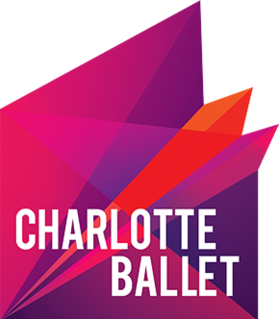
Charlotte Ballet is the oldest professional ballet company in North Carolina. It was founded as North Carolina Dance Theatre in Winston-Salem by Robert Lindgren, who was then Dean of Dance at the University of North Carolina School of the Arts, in 1970. It moved to Charlotte in 1990 and rebranded as Charlotte Ballet in 2014. It currently has 26 dancers and is the parent company of the Charlotte Ballet Academy.
Stanislas Idzikowski was a Polish dancer and ballet master, active in England, and with such historic companies as Pavlova's, Ballets Russes, and Vic-Wells. During his performance career, 1910-1933, he became famous for his brilliant classical technique, and for the development of ballet roles. With Beaumont he co-authored an influential book on the Cecchetti Method, still in print. He later taught dance in London.
Danses concertantes is a work for chamber orchestra by Igor Stravinsky, composed in 1942. A performance lasts about twenty minutes. Although written as an abstract ballet for concert performance, it has been choreographed numerous times.
Balanchine technique or Balanchine method is the ballet performance style invented by dancer, choreographer, and teacher George Balanchine (1904–1983), and a trademark of the George Balanchine Foundation. It is used widely today in many of Balanchine's choreographic works. It is employed by ballet companies and taught in schools throughout North America, including the New York City Ballet and School of American Ballet, where it first emerged.

Francisco Moncion was a charter member of the New York City Ballet. Over the course of his long career, spanning some forty years, he created roles in major works by George Balanchine, Jerome Robbins, and others. He was also a choreographer himself and a talented amateur painter.
